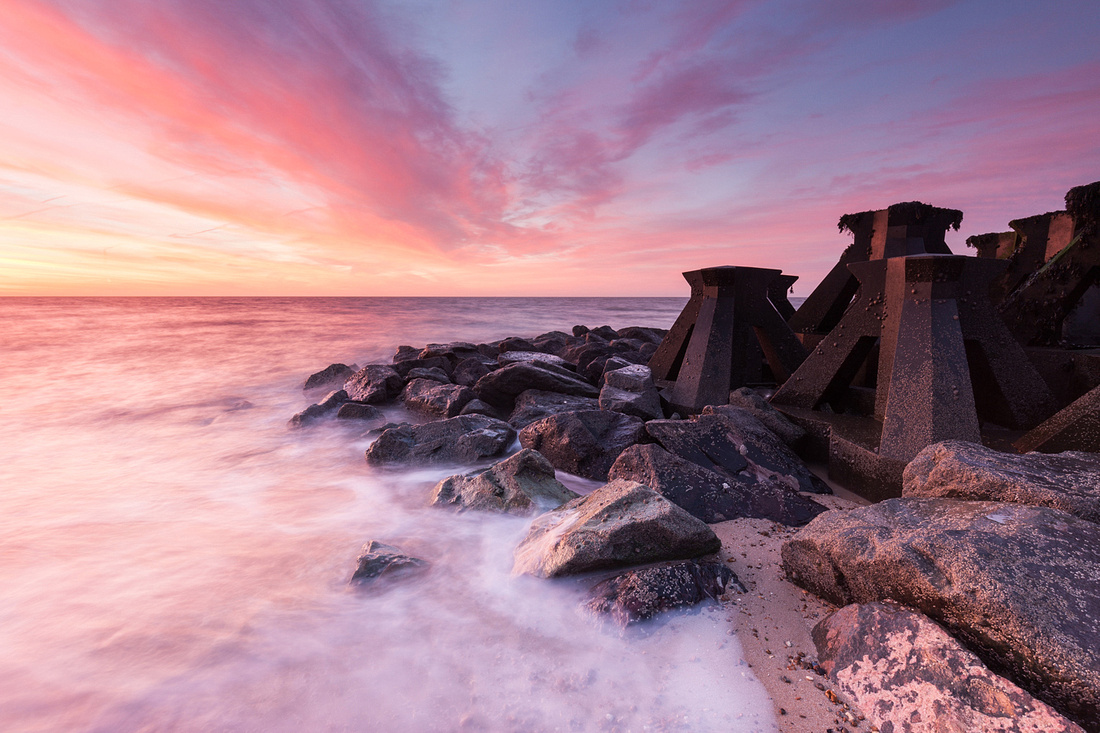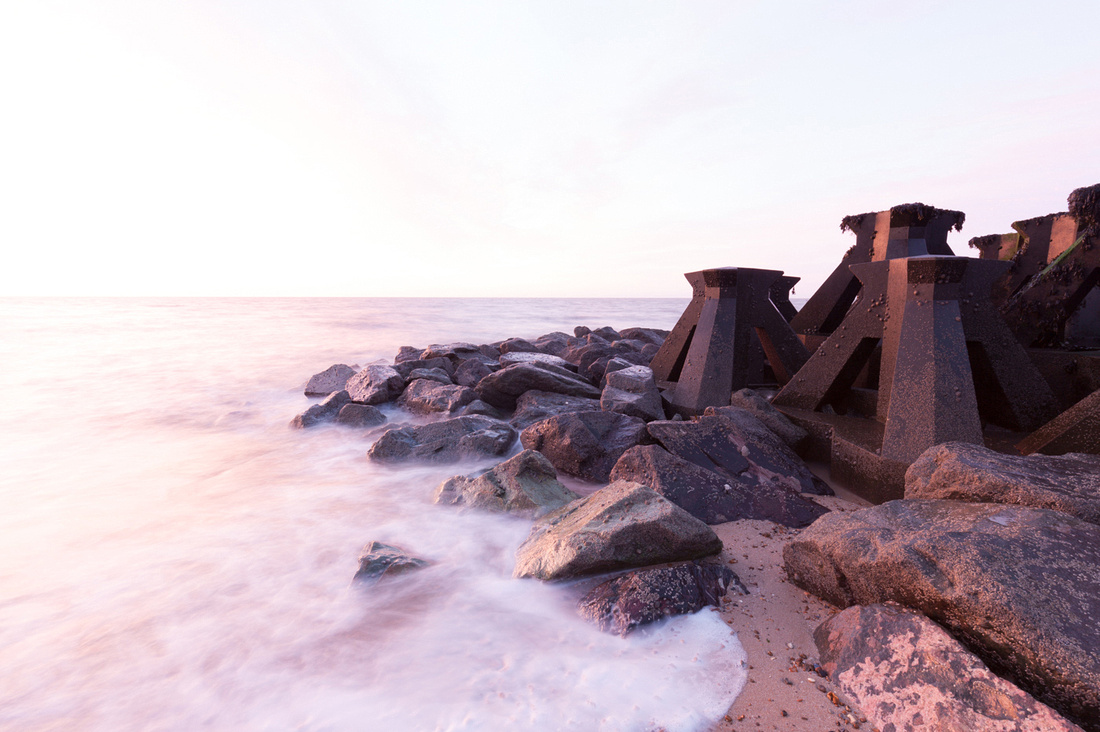Tutorial: Using neutral density graduated filters


I was asked recently to do a short talk at Felixstowe Photographic Society on why, when and how to use filters. I use filters all the time so with plenty of images to illustrate the difference they make it was just a matter of choosing the best ones right? Not quite. Although I have plenty of finished images using filters I don't have any images showing what it would look like without a filter and if I did they have been long ago consigned to the bin.
So, being the dedicated type I got up early on a school day and went to the coast specially to take a set of before and after images and was rewarded with a rather good sunrise. So, as I've now done said talk and have the images lying around I thought I'd use them here for a quick 'how to' guide.
The image above is the finished item and a pretty good representation of the colourful sunrise that I had the pleasure of witnessing. Using the advanced optical equipment at my disposal (i.e. my eyes) I could easily watch the sunrise, take in all the colours and see all the details in the bright areas of the sky as well as in the shadowy areas of the foreground. Using the less advanced optical equipment (i.e. my camera) to capture it all in a photo isn't quite as easy.
Put simply the camera just isn't capable of recording the full range of tones in a high contrast scene like this in a single shot. To illustrate, let's see what happens when you set the exposure to capture all the bright colours in the sky without clipping the highlights (below). As you can see, the sky looks great with plenty of detail and no blown highlights but the foreground is left underexposed with shadows dark and lacking any detail.


If however we alter the exposure to capture details in the shadows (below) we have the opposite problem, the foreground is well exposed but the sky is washed out and lacking any detail and in case you are wondering, those bright white areas of the sky can't be recovered in editing software, they are lost forever.


The solution to this problem comes in the form of a neutral density graduated filter (ND grad). If you are unfamiliar with graduated filters they are a rectangular plastic filter, one half of which is clear the other half has a neutral tint and they slot into a holder fitted to the front of the lens. The tint comes in various strengths to cope with different situations, the most common being 0.3, 0.6 and 0.9 (which block out 1, 2 and 3 stops of light respectively) and the transition between the two halves can be either soft or hard, the former being a gentle blend between tinted and clear while the latter is a more abrupt transition…. in fact choosing which filters to buy from all the options can be more complicated than using them.
Generally speaking hard ND grads are useful for images where the horizon is visible and thus the areas of bright sky and darker land are clearly separated (for example seascapes) while soft ND grads are better where the horizon is less distinct (mountain scenes for example). A third option is the reverse grad which is similar to a hard grad but the tinted area which will be positioned at the horizon is the darkest part, becoming lighter at the top of the filter, these are perfect for sunrise or sunset when the sun is at the horizon, giving you the strongest tint where you need it without making the rest of the sky unnaturally dark.
Personally I use hard grads the majority of the time and if I had to choose just one graduated filter it would be a 0.6 (2 stop) hard grad which would be enough in most situations to stop the sky from blowing out but a set of 1, 2 and 3 stop hard grads would be a lot more versatile. Of course what you shoot most will dictate the filters that are best for you so don't listen to me. When it comes to brand I'm afraid you get what you pay for, I use Lee filters which while not cheap are excellent quality and the neutral tint is perfectly neutral. There are cheaper options out there but in my experience they aren't always neutral and introduce a colour cast to the image.
Positioning the filter is just a matter of sliding it down in front of the lens while looking through the viewfinder (or using live view) until it covers the sky and the camera meters through the filter as normal. Be careful not to pull the filter down too far and darken the foreground or not far enough leaving a pale band on the horizon. That's pretty much all there is to it.
There are of course other ways of solving the problem, Instead of messing around with filters why not just take the darker version and lighten the shadows with editing software or take two exposure and blend them together? Well you could, in fact there are occasions when blending two exposures is a better solution than using filters. Lifting the shadows is also possible but even with the latest cameras lightening the shadows that much will still introduce unsightly noise to the image. My aim is to get the best quality image possible and would rather spend a few seconds extra to get it right in camera than spend longer sitting at the computer.



